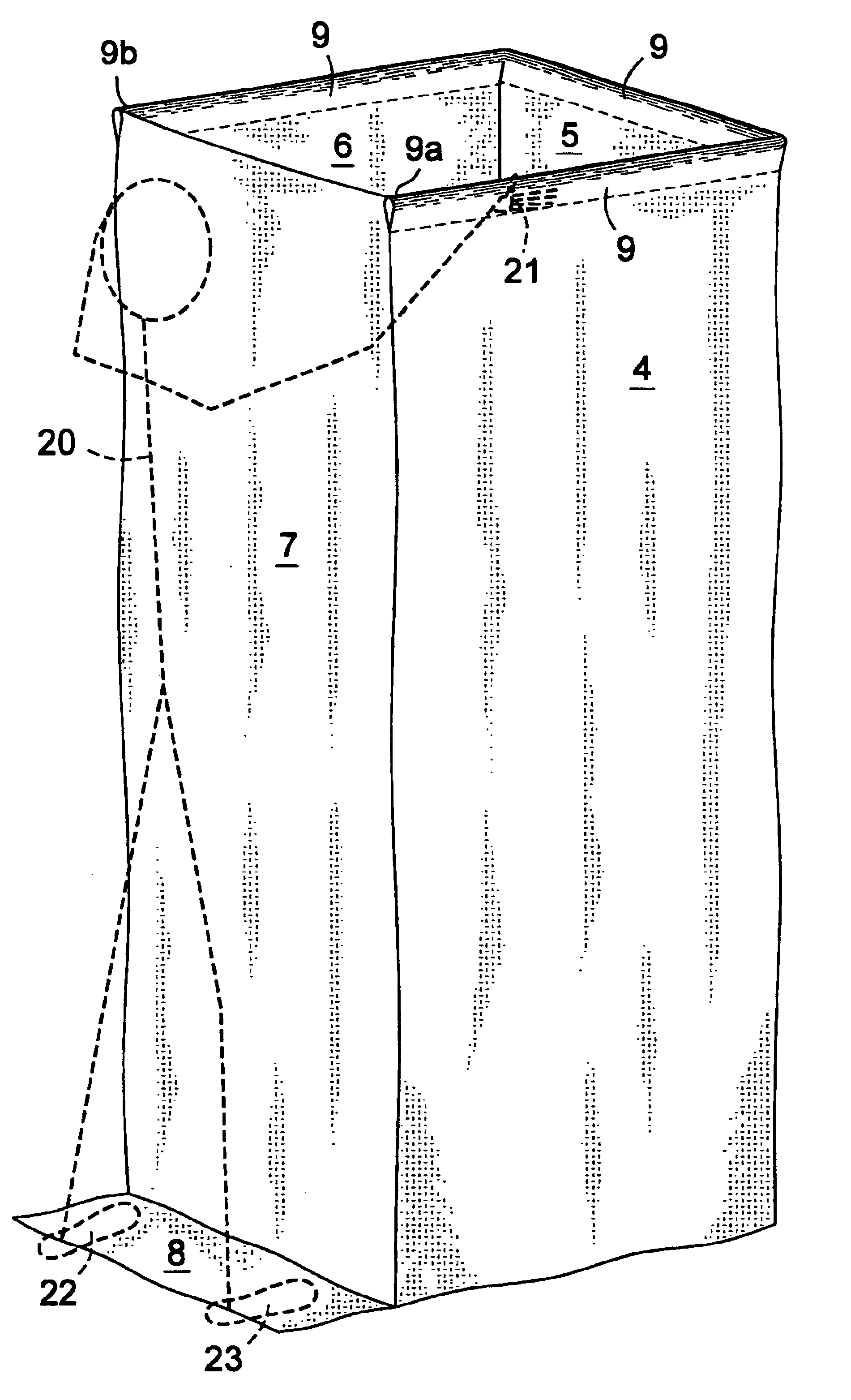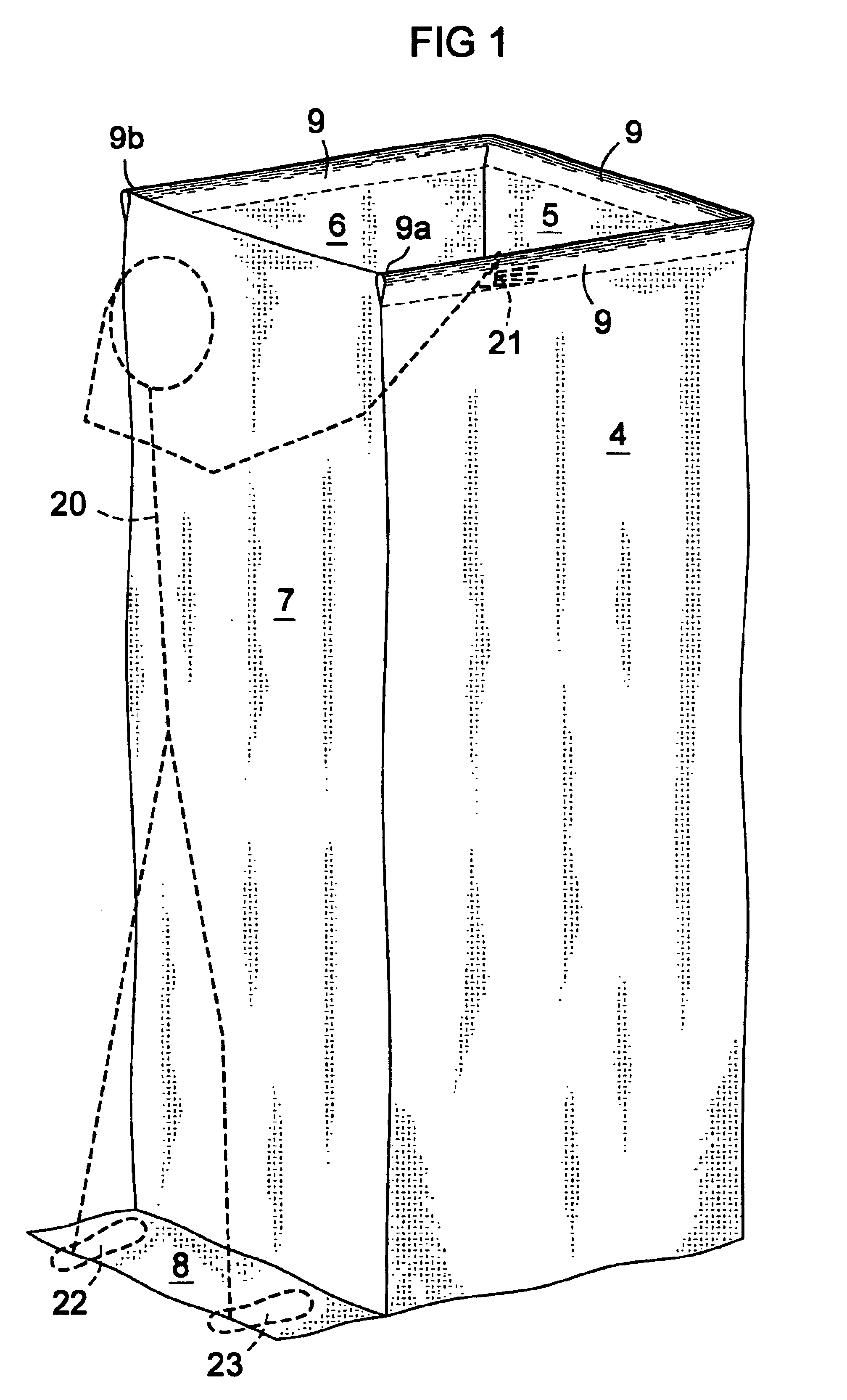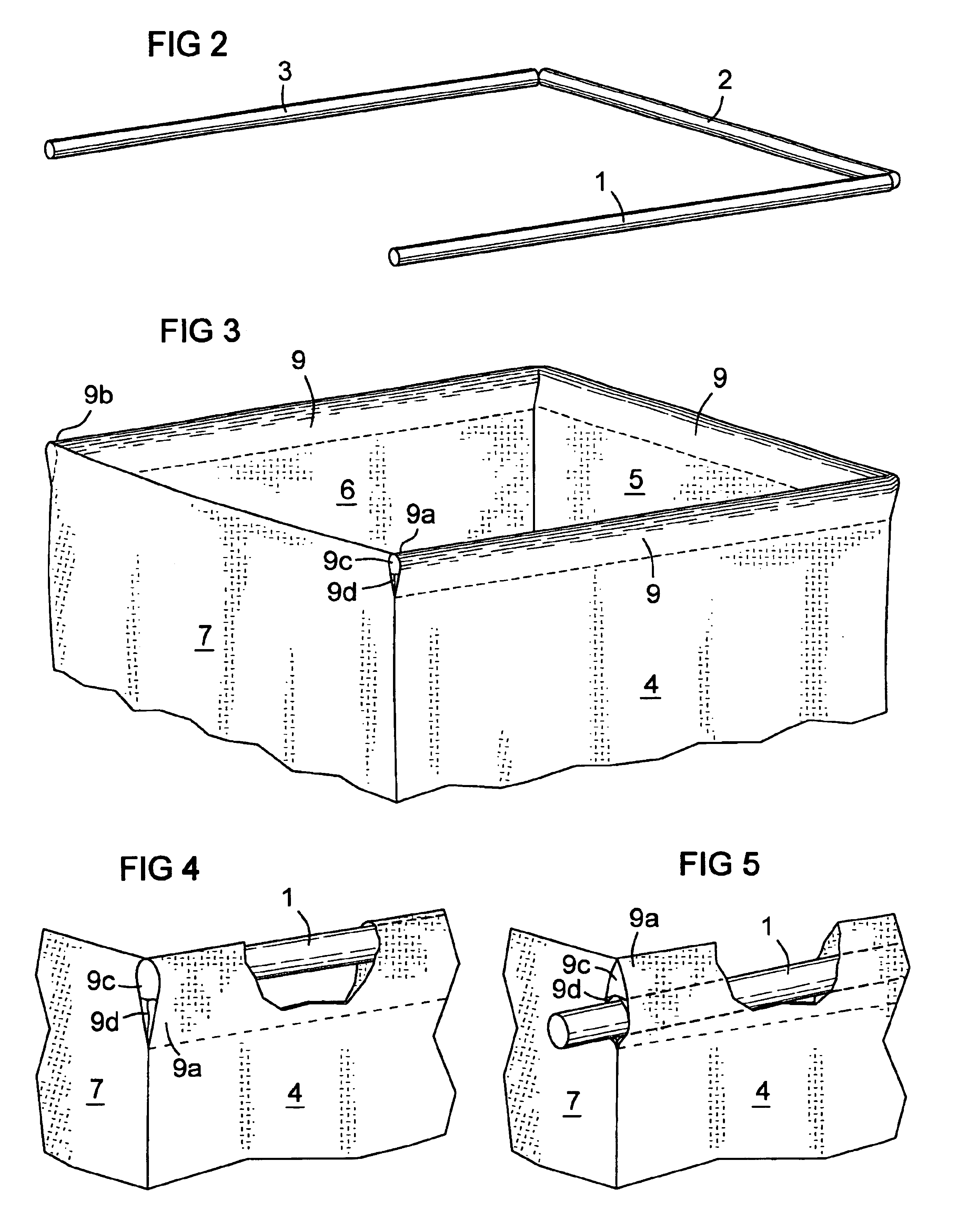Portable dressing blind and method of use
a dressing blind and folding technology, applied in the field of portable folding dressing blinds, can solve the problems of time-consuming and inconvenient installation of stakes, easy loss or left behind, time-consuming erecting and folding of tents, etc., and achieve the effect of preventing billowing and raising of blinds
- Summary
- Abstract
- Description
- Claims
- Application Information
AI Technical Summary
Benefits of technology
Problems solved by technology
Method used
Image
Examples
Embodiment Construction
The invention is a blind for changing clothes on the beach. It is made of a flexible opaque or light-diffusing material, preferably fabric. The fabric is sewn into a generally square or rectangular tube with an open top and bottom. A continuous sleeve is sewn into the top edge of the fabric around three sides 4, 5, and 6. Three generally rigid rods 1, 2, and 3 are inserted in the sleeve, forming three rigid edges at the top, from which the tube hangs as a closed curtain. The top of the fourth side 7 is suspended between the ends 9a and 9b of the sleeve, which are supported by rods 1 and 3 respectively. A foot flap 8 extends from the bottom of side 7.
In operation, a support person stands on the foot flap 8 in a wide stance, and holds rods 1 and 3 parallel to each other at head height with enough lateral force to suspend the fourth side 7 between them. This forms a horizontal U-shaped temporary frame of rods, on which the curtain hangs in the shape of a generally square or rectangular...
PUM
 Login to View More
Login to View More Abstract
Description
Claims
Application Information
 Login to View More
Login to View More - R&D
- Intellectual Property
- Life Sciences
- Materials
- Tech Scout
- Unparalleled Data Quality
- Higher Quality Content
- 60% Fewer Hallucinations
Browse by: Latest US Patents, China's latest patents, Technical Efficacy Thesaurus, Application Domain, Technology Topic, Popular Technical Reports.
© 2025 PatSnap. All rights reserved.Legal|Privacy policy|Modern Slavery Act Transparency Statement|Sitemap|About US| Contact US: help@patsnap.com



